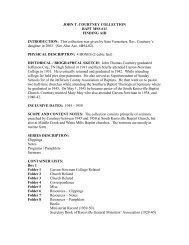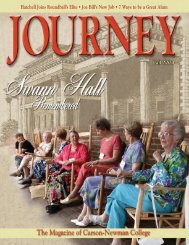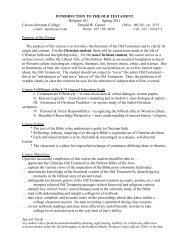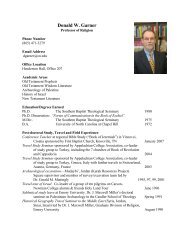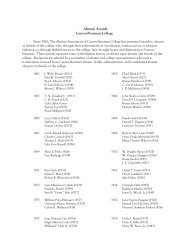a comparative analysis of louis durey and francis poulenc's settings ...
a comparative analysis of louis durey and francis poulenc's settings ...
a comparative analysis of louis durey and francis poulenc's settings ...
Create successful ePaper yourself
Turn your PDF publications into a flip-book with our unique Google optimized e-Paper software.
10<br />
b. Louis Durey (1888-1979)<br />
Louis Durey was born in Paris on May 27, 1888. He was the oldest <strong>of</strong> three<br />
brothers <strong>and</strong> was not musically inclined as a child. He decided against piano lessons,<br />
claiming that it was an activity suited for girls, <strong>and</strong> worked instead in his father’s printing<br />
business. However, as Durey grew up, he began to attend many operas. His decision to<br />
become a composer was greatly influenced by hearing a performance <strong>of</strong> Claude<br />
Debussy’s Pelléas et Mélis<strong>and</strong>e in 1907. Debussy’s opera had such an influence on<br />
Durey that he did not miss a single performance <strong>of</strong> the work during its Paris revival for<br />
the next seven years! 24 Durey was no longer satisfied with merely enjoying music—he<br />
wished to study <strong>and</strong> write it. He began studying music at the Schola Cantorum, a private<br />
music school in Paris, <strong>and</strong> started to compose on his own, his earliest known piece dating<br />
1914.<br />
The onset <strong>of</strong> World War I changed Durey’s plans drastically. He reluctantly<br />
served in the army for sixteen months—military life <strong>and</strong> the horror <strong>of</strong> war appalled<br />
him. 25 During the next couple <strong>of</strong> years, Durey set several poems to music <strong>and</strong> began<br />
composing more <strong>of</strong>ten. In 1917, Erik Satie, whom Durey had met at the Schola<br />
Cantorum, became interested in Durey’s compositions <strong>and</strong> invited him to perform his<br />
piano duet, Carillons, in a collaborative concert presented by Satie’s friends, then called<br />
Les Nouveaux Jeunes. 26 The group, including Durey, began meeting at Darius Milhaud’s<br />
apartment <strong>and</strong> were eventually dubbed “Les Six.” Although Durey felt close friendship<br />
with the other five composers, he differed from them in that he was greatly influenced by<br />
<br />
24 Marc Wood, “Homme de tête,” 42.<br />
25 James Harding, The Ox on the Ro<strong>of</strong>, 55.<br />
26 Marc Wood, “Homme de tête,” 43.



